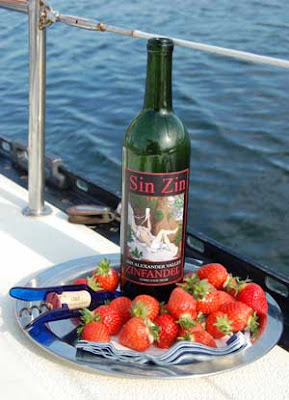


Lines, Spaces and Intersections on Topics Familial, Familiar and Philosophical







 Smell and memory are intimately linked.
Smell and memory are intimately linked. This is the cover of a very beautiful, old copy of sheet music, Narcissus, from the piano cycle Water Scenes Op. 13 no. 4 by Ethelbert Nevin (1862-1901), an American gentleman who wrote this piece in 1891. It could be described as a rather sentimental parlour piece. I love it!
This is the cover of a very beautiful, old copy of sheet music, Narcissus, from the piano cycle Water Scenes Op. 13 no. 4 by Ethelbert Nevin (1862-1901), an American gentleman who wrote this piece in 1891. It could be described as a rather sentimental parlour piece. I love it! Today our neighbour, Margaret, handed in a gift for Wee Ishbel. It is a woolen cardigan which she has knitted.
Today our neighbour, Margaret, handed in a gift for Wee Ishbel. It is a woolen cardigan which she has knitted.
 A name has be found ... the last props are now taken away .... the champagne bottle is successfully swung ... deep breath and ho-o-o-ld ..... wait, wait .... watch the grease on the blocks.... "There she goes! "... mountainous piles of chains start to drag down the slipway ... ... dust everywhere ... darkness as the hull blocks all the daylight, then ....
A name has be found ... the last props are now taken away .... the champagne bottle is successfully swung ... deep breath and ho-o-o-ld ..... wait, wait .... watch the grease on the blocks.... "There she goes! "... mountainous piles of chains start to drag down the slipway ... ... dust everywhere ... darkness as the hull blocks all the daylight, then ....

